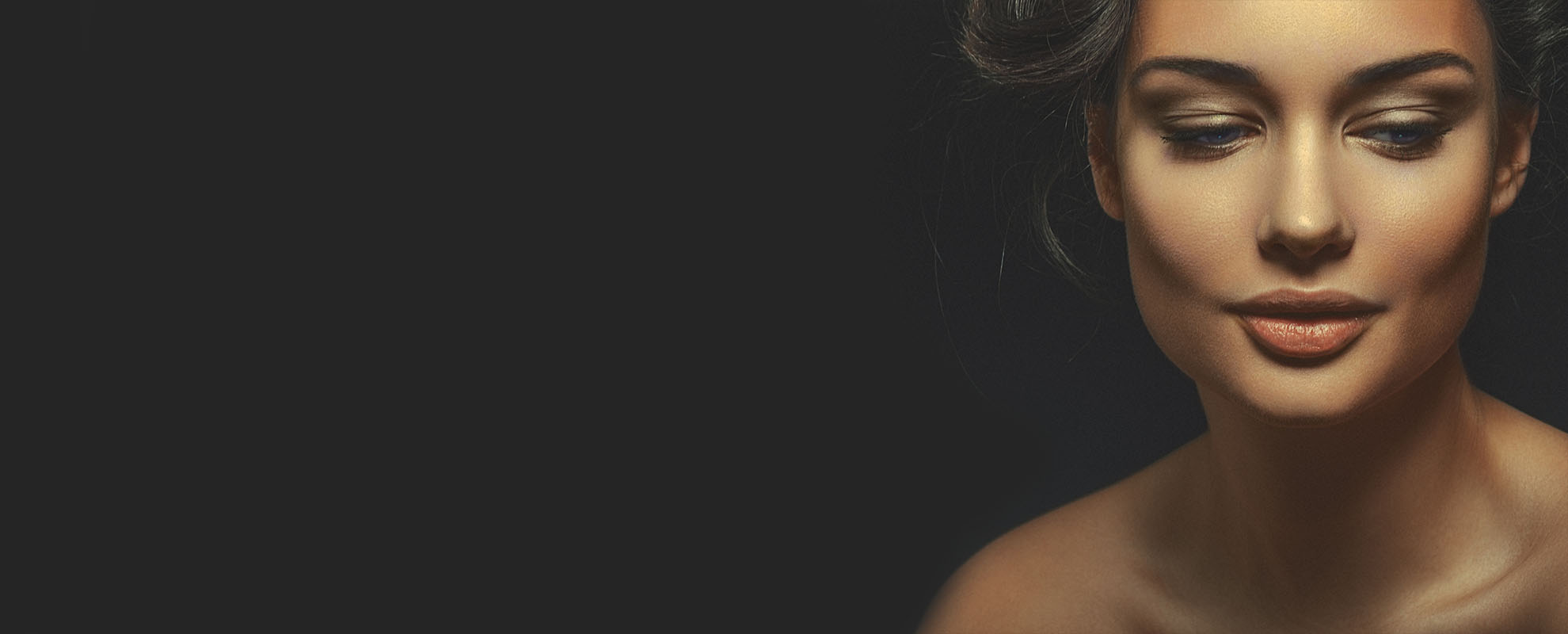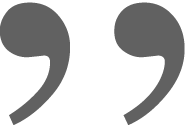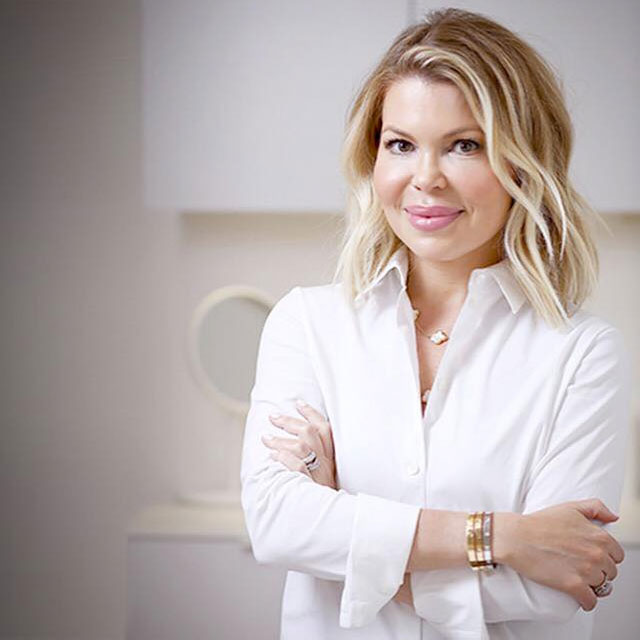- Dermatology
- Plastic Surgery
- Ariel N. Rad, M.D., PH.D.
- Face Cosmetic Surgery
- Breast Cosmetic Surgery
- Body Contouring
- Breast Cancer Reconstruction
- Destination & Travel Package
- Gallery
- Testimonials
- Boutique
- PRESS + BLOG



To take your results to the next level, we offer the cutting edge solutions that are proven to be safe and effective at delivering remarkable results.
For expression lines, Dr. Sherber uses Botox® Cosmetic to create a softer, balanced and natural appearance.
For static lines and troughs, Dr. Sherber uses Injectable Dermal Filler to restore lost facial volume.
With Laser, Dr. Sherber’s approach focuses on improving skin health by bringing fresh undamaged skin to the surface, while improving skin’s appearance by softening imperfections with little to no downtime.
To treat uneven texture, dull skin tone, or acne, Dr. Sherber uses gentle Chemical Peels that involve little to no downtime.

Expression lines are common and form along the forehead, the central frown area of the forehead (“frown lines” or “number 11 lines”), outer corners of the eyes (“crow’s feet”), sides of the nose (“bunny lines”), chin, and neck. These are caused by muscle activity that pulls on and creases the overlying skin over time. With continued wear and tear from muscles tugging on the skin creases will deepen, causing etched lines at rest.
OUR APPROACH
Botox® Cosmetic is the gold standard treatment to soften expression lines. It works by relaxing muscles to inhibit their strong pulling on the skin that causes lines to form.
A hallmark of Dr. Sherber’s technique is that she is able to create a very natural appearance for her patients, as many of them appear on high definition film and need to look youthful but not obviously “done.” Whereas some people worry that Botox® will make them look frozen or permanently surprised, Dr. Sherber utilizes state-of-the-art techniques to create very nuanced lifting of the brows, smoothing of the forehead, and elevation of the corners of the mouth.
For those looking to prevent lines rather than treat significant existing lines, Dr. Sherber often recommends very subtle “baby Botox” treatments twice a year to soften the muscle activity and prevent deepening of lines over time without freezing the muscles entirely.
OTHER OPTIONS
Dysport and Xeomin are alternatives, however Dr. Sherber prefers Botox® as it delivers predictably effective results that can be fine tuned from subtle to significant.
For those not looking for an injectable approach to treating expression lines, fractionated non-ablative lasers such as Clear+Brilliant and Perméa stimulate collagen production and will smooth skin texture over time.
Permanent weakening of the muscles that create frown lines is possible with Brow Lift and Upper Blepharoplasty techniques employed by Dr. Rad.
Glycolic acid and retinoids work to stimulate collagen and to improve skin density, while deeply absorbing moisturizers help skin to be more resistant to creasing.



Dr. Sherber graduated magna cum laude from Harvard University, where she designed and implemented a novel degree program in health policy focused on assessing and improving quality of care. She next attended the Johns Hopkins University School of Medicine where she earned her M.D. degree. Following a post-doctoral fellowship in clinical research at Columbia University, she returned to Johns Hopkins for dermatology residency training and conducted research in scar healing and in disorders of abnormal collagen. She is now a Clinical Assistant Professor at George Washington University in the Department of Dermatology.
Every time the skin is cut (as with surgery) or is deeply inflamed (as with severe acne), a scar is an inevitability. However, using the most innovative laser techniques and topical treatments, Dr. Sherber can assure the optimal appearance of your scar.
RED SCARS
Nd:YAG vascular laser treatments and Laser Genesis treatments are a virtually painless no-downtime approach that will fade the redness significantly. These treatments can also soften hardened scar tissue, and can be performed safely on any skin tone.
Depending on the type of redness and the sensitivity of the scar, numbing cream may be applied prior to the procedure. Dr. Sherber will then tailor the treatment to the type of scar tissue in order to ensure safe and effective results. Incremental improvement should occur with each treatment, and several sessions are needed depending on the degree of redness being targeted.
Topical silicone with sun protection (such as Biocorneum+) will help to protect the scar during the course of treatment.
THICKENED SCARS
Hypertrophic scars are thickened due to excess collagen formation. Depending on the thickness of the scar, Dr. Sherber may smooth it using laser-enhanced active delivery. The Perméa laser makes a tiny grid on the skin that enhances absorption of topical active ingredients by 17X. Dr. Sherber treats the scar and then may prescribe topical treatments to soften the scar tissue.
For more ropey scars, fractionated ablative lasers can produce dramatic results. Dr. Sherber prefers the Pearl Fractional for this, as its YSGG wavelength is an optimized wavelength in between CO2 and Erbium lasers. It makes a tiny customizable grid on the skin that delivers energy to the collagen layer (the dermis). It triggers a controlled healing response that replaces abnormal collagen in the scar tissue with more normal collagen so that the scar will become more similar to normal skin. Pinpoint bleeding is usual post-treatment, and the scar will require several days of special care as it heals.
Depending on the size and site of the scar, the area to be treated may be numbed prior to treatment with injected anesthesia or with topical numbing cream. Redness in the treated area can persist for only a few hours to several weeks, depending on the type of laser used and each patient’s skin type, and several treatments are generally needed in order to achieve the desired result.
OLD SCARS
For more mature scars, Dr. Sherber will often work in concert with Dr. Rad. Dr. Sherber will pre-treat the area of skin around the scar with either a *fractionated ablative* or fractionated non-ablative laser, depending on the individual appearance of the prior scar.
Next, Dr. Rad will remove the problematic scar tissue and create a fresh edge of healthy skin which he will close using very delicate and precise sutures. Then, in the following weeks Dr. Sherber will treat the healing skin with laser to promote ideal healing. Laser treatments will usually be scheduled to begin 2 weeks post-excision.
Topical treatments such as silicone sheeting or retinoids may also be prescribed, depending on the specifics of the scar being treated.
DISCOLORED SCARS
For pigmented scars, Dr. Sherber often draws on a combination of laser treatments to increase the skin’s absorption of active ingredients – such as Perméa – followed by custom blending compounds that lighten unwanted pigmentation.
This can be a remarkably gentle yet effective approach, particularly in patients with skin tones prone to post-inflammatory hyperpigmenation (dark spots in areas of skin injury such as acne, bug bites, cuts, and burns).
Rigorous sun protection is essential when treating these scars since any UV exposure will work against the results of treatment.
Pore size is genetic, but pores can enlarge over time due to congestion and sun damage. When pores are clogged, they will be stretched and appear larger.
Enlarged pores due to sun damage are caused by damage to collagen. Free radical damage from UV exposure, pollution, and smoking will all damage collagen and make it less robust. This leads to pores expanding like a drawstring bag.
For enlarged pores that look like doughnuts, these may be benign spots of sebaceous hyperplasia representing overactive oil glands.
OUR APPROACH
For congested pores, products with beta hydroxy acids, which dissolve in oil, natural clays will clear out pores and help to keep them clear. Thorough cleansing with balm cleanser is also essential since oil dissolves in oil better than in water.
Laser treatments that stimulate collagen are very effective at decreasing pore size. A study of the Clear+Brilliant fractionated non-ablative laser involved painting subjects’ skin with fluorescent dye, then wiping it off the surface so that it only remained in the pores, and then photographing with high resolution during a series of treatments. Six treatments produced clinically and statistically significant improvement in pore size in those treated.
Retinoids work to reverse sun damage and also to keep pores clear, so they are an excellent solution to address all causes of enlarged pores. Spots of sebaceous hyperplasia are often best treated with precise in-office application of TCA. Dr. Sherber employs the TCA Cross technique to dissolve these spots without pain or scarring.
OTHER OPTIONS
In-office chemical peels can be a wonderful adjunct to at-home skincare for skin that tends to get congested.
Skin that is rough and dry has the hallmark of difficulty holding on to water, which is called increased transepidermal water loss. This roughness and dryness can be chronic, due to conditions such as eczema, or can be acute from issues such as allergic dermatitis from a product.
OUR APPROACH
Restoring skin to balance first requires gentle removal of the dead skin cells on the surface that are inhibiting absorption of hydration (water) and moisture (oil). Enzymatic exfoliants are best for this as they dissolve dead skin cells without damaging the skin’s natural barrier.
Dr. Sherber first addresses any exacerbating outside factors such as use of potentially irritating ingredients, overuse of acid products, or skin allergies.
Reinforcing the skin’s barrier involves hydrating the skin and sealing it in with soothing creams that contain occlusive ingredients that trap oil and water in the skin.
Each person’s skin is different, and so each regimen is customized and adjusted over time to ensure optimal results.
OTHER OPTIONS
In-office ultrasonic microdermabrasion (using beads of water rather than crystals to remove dead skin cells) paired with sonopheresis infusion of hydration and antioxidant vitamins provides skin with immediate smoothing and deep nourishment.
The best treatments for rough and dry skin involve enzymatic exfoliants and a combination of hydrating and moisturizing ingredients that absorb deeply.
We look forward to welcoming you for your private consultation
Enjoy a unique experience centered on your privacy and on unhurried attention to your concerns
Or Send a confidential inquiry and our staff will be happy to reach out to you
Sherber+Rad1101 15th St. NW, Suite 100, Washington, D.C. 20005